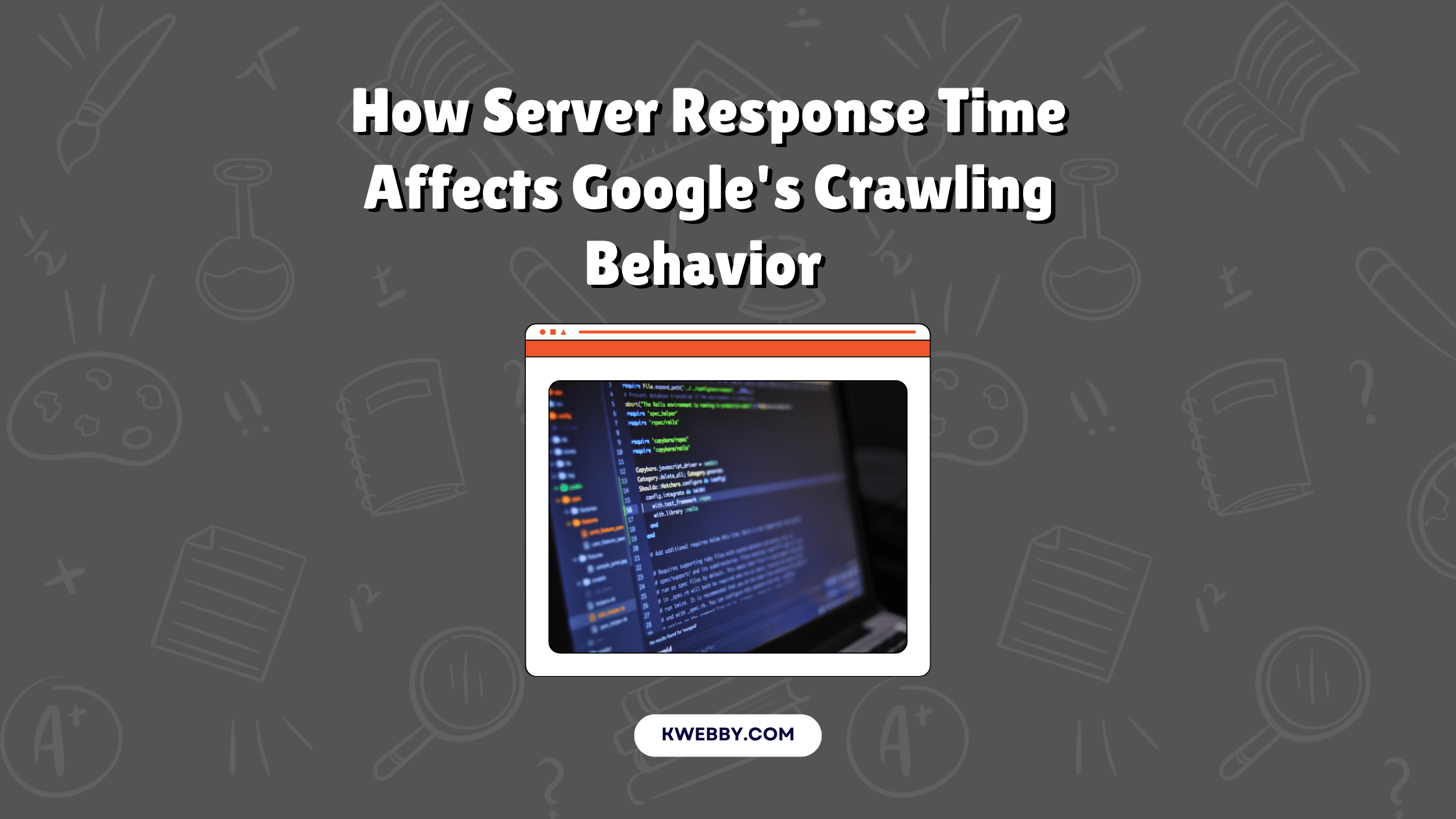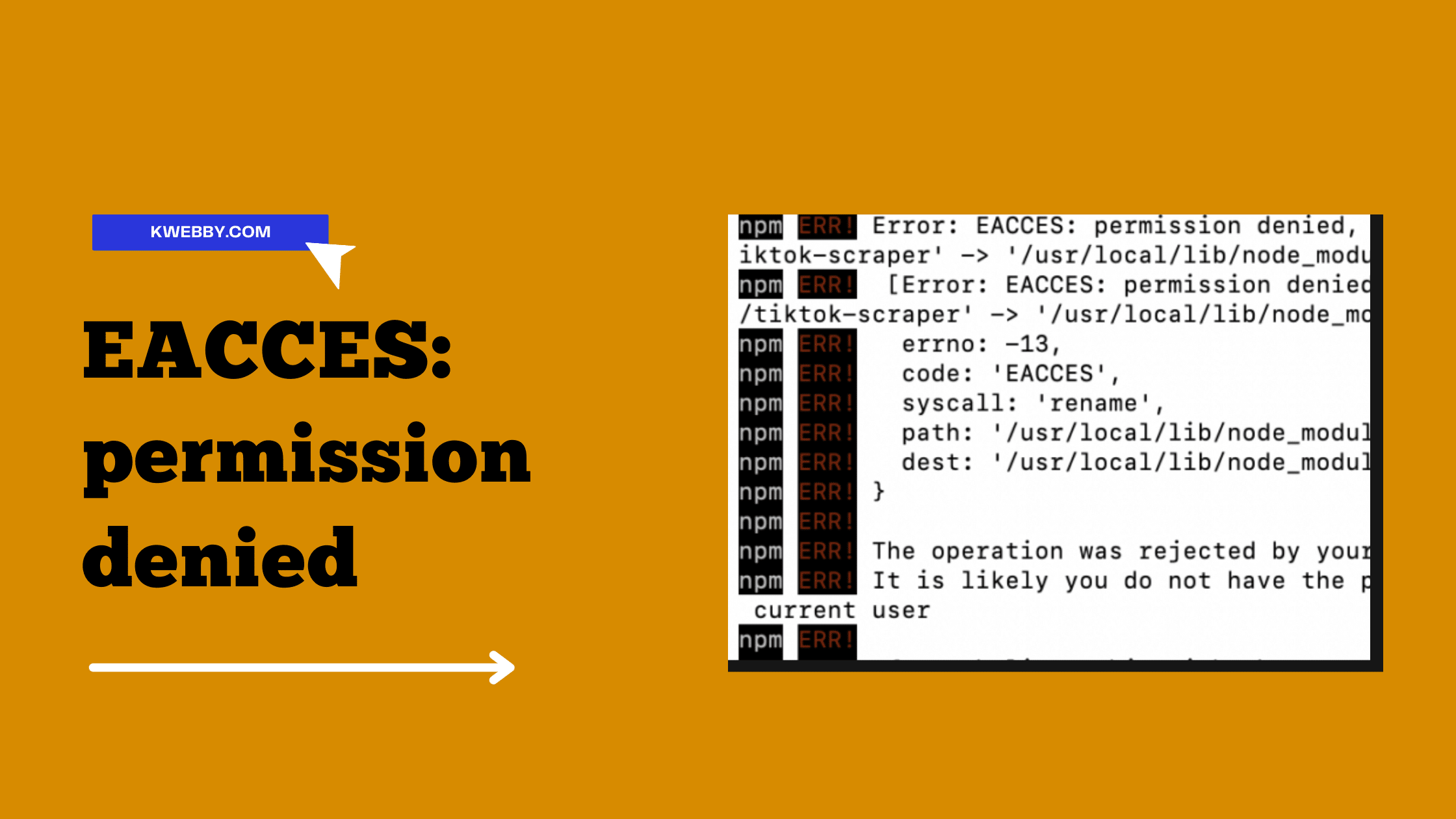
Error: EACCES: permission denied on your Apple macOS (Fixed)
Choose Your Language:
If you are an apple macOS user and have been getting Error: EACCES: permission denied error, then this tutorial is for you.
We will go over ways to resolve this issue. Error: EACCES: permission denied is usually caused when a program tries to access a file or folder that it doesn’t have the correct permissions to access.
Learn more about macOS errors and tutorials here.
There are several ways to resolve this error, depending on what is causing it. In this tutorial, we will cover some of the most common methods for fixing Error: EACCES: permission denied.
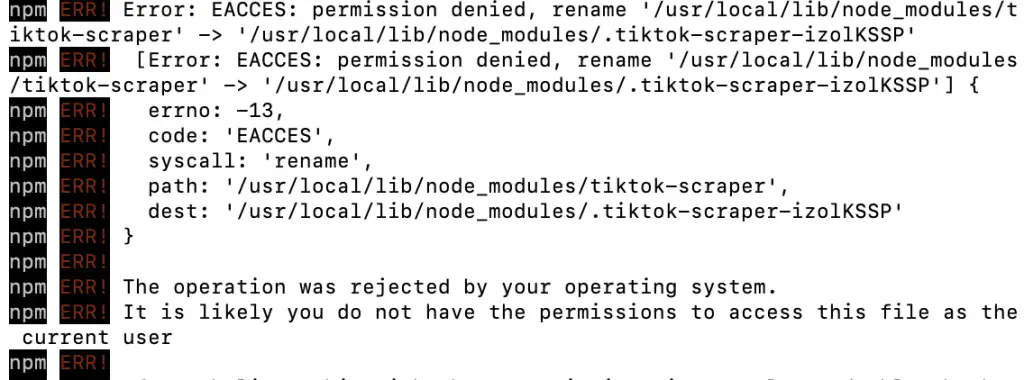
Change Permission Of File or Folder (Get Info)
One way to resolve Error: EACCES: permission denied is to change the permissions of the file or folder that your program is trying to access.
You can do this in the Finder by right-clicking on the file or folder and choosing Get Info.

In the Get Info window, you will see a section called Permissions.
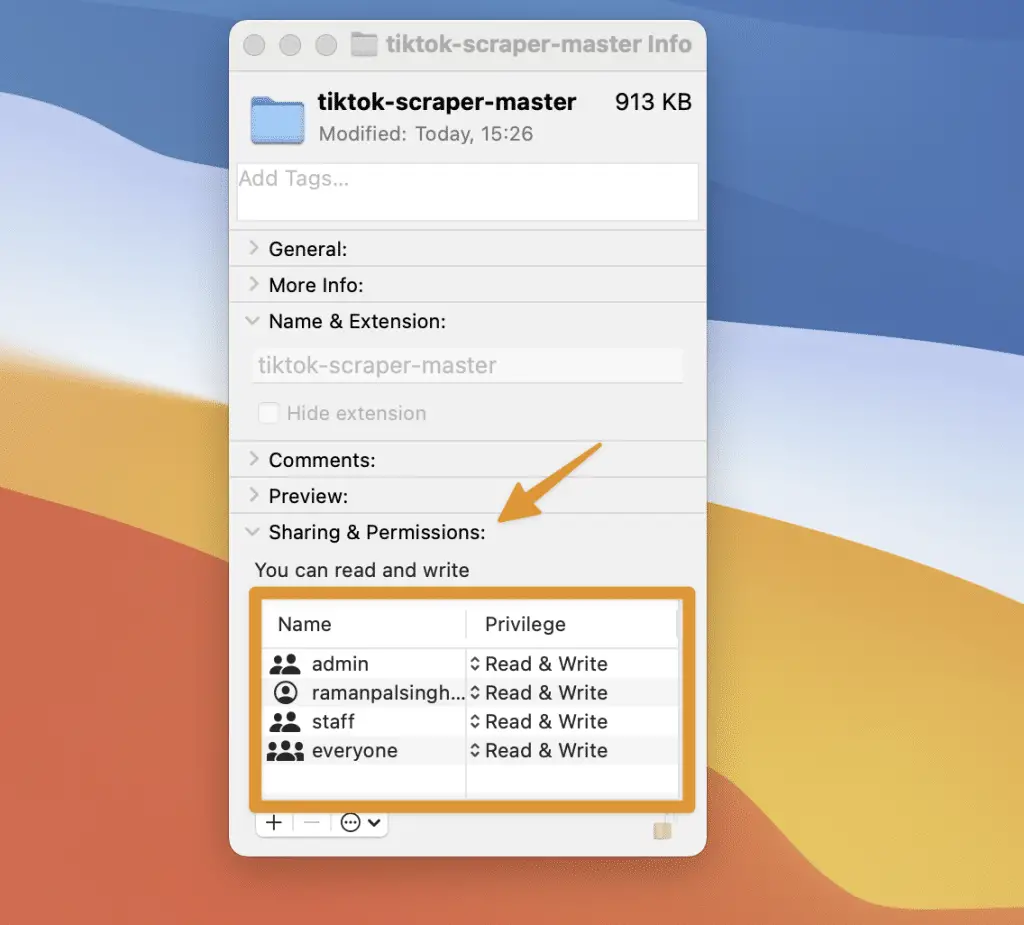
You can also change the permissions of a file or folder from the command line.
Change Permission Using Command Line
First, open the terminal on your mac and Install npm on your system with the following command;
sudo npm installand after the npm Installation, enter the following command line;
sudo npm install -g --unsafe-perm=true --allow-rootYou will be prompted to enter your password. Once you have entered your password, the program will have permission to access the folder.
Change User
If you are still getting Error: EACCES: permission denied, it is likely that the issue is not with the file or folder permissions.
Another common cause of this error is a conflict between two programs that are trying to access the same file.
For example, if you are trying to run a program as root and another program is also trying to access the same file, you will get Error: EACCES: permission denied.
To resolve this issue, you can try running the program as a different user.
You can do this by using the sudo command. For example, if you are trying to run a program as root and another program is also trying to access the same file, you can use the following command;
sudo -u otherprogram programnameThis will run the program as the user “otherprogram” instead of root.
Change Permission of Parent Folder
If you are still getting Error: EACCES: permission denied, it is likely that the issue is with the permissions of the parent folder.
The parent folder is the folder that contains the file or folder that your program is trying to access.
To fix this issue, you need to change the permissions of the parent folder.
You can do this in the Finder by right-clicking on the parent folder and choosing Get Info. In the Get Info window, you will see a section called Permissions.

You can also change the permissions of a folder from the command line.
First, open terminal on your mac and enter the following command;
sudo chmod -R 777 /path/to/folderReplace “/path/to/folder” with the actual path to the folder that you want to change the permissions for.
This will recursively change the permissions of all files and subfolders in the specified folder.
Once you have changed the permissions of the parent folder, you should no longer get Error: EACCES: permission denied.
Change Disk Permission
Sometimes, disk permissions might be the culprit behind Error: EACCES: permission denied. macOS provides a tool called Disk Utility that can be used to repair these permissions and resolve related issues.
First, open Disk Utility, which can be found in the Applications > Utilities folder.
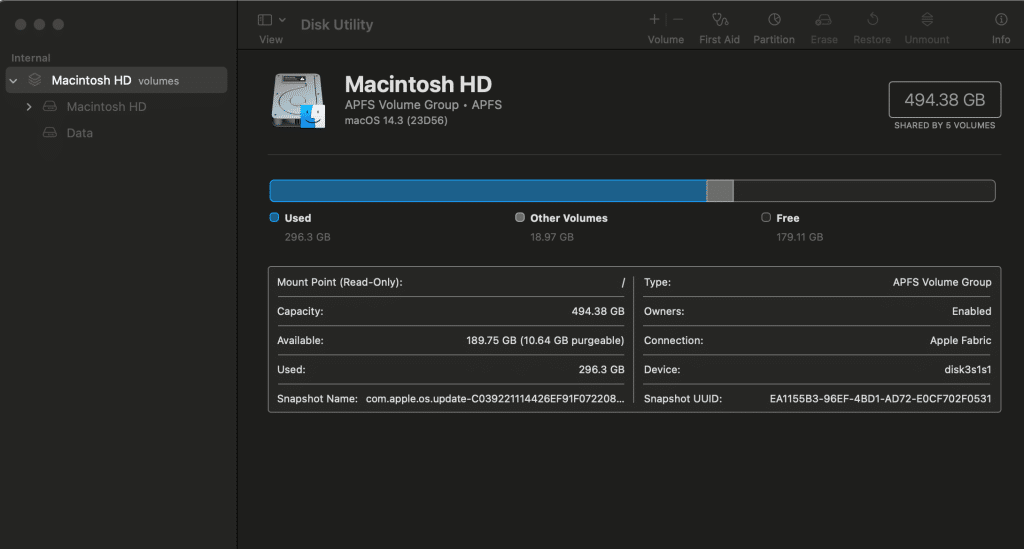
Once Disk Utility is open, follow these steps:
Select your main disk, which is usually named “Macintosh HD.”
In the toolbar, click on “First Aid.”
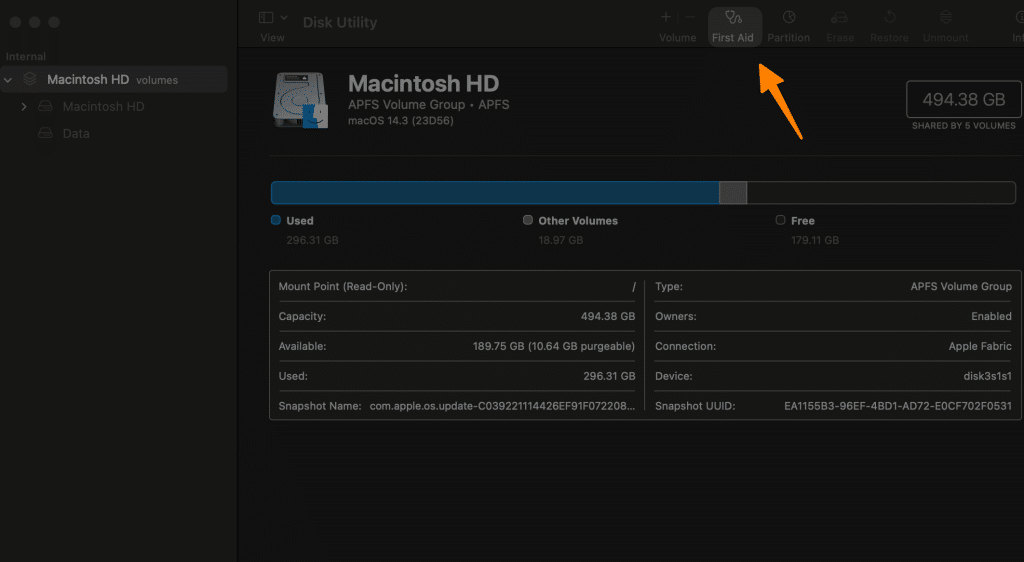
Click on the “Run” button to begin the process.
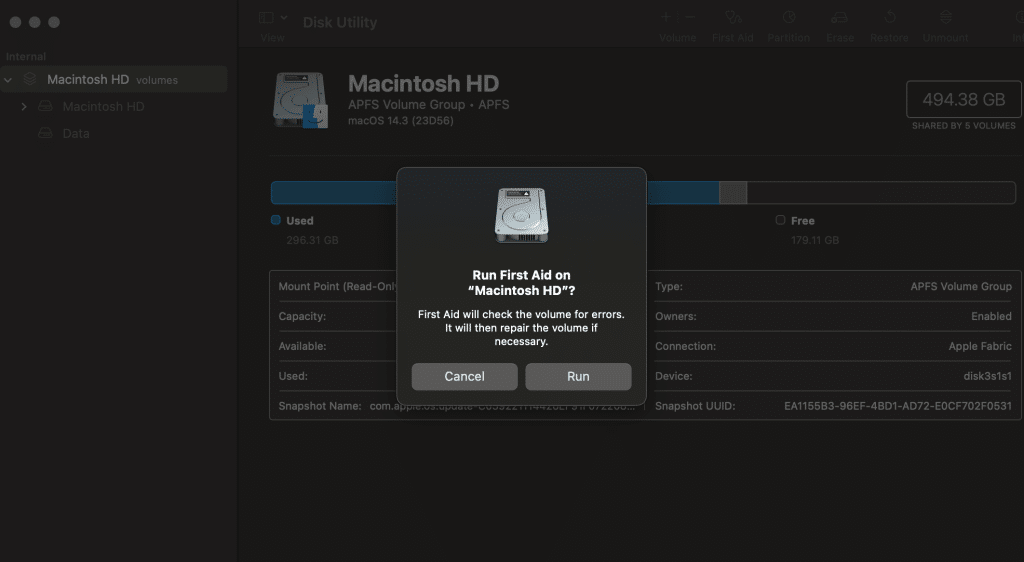
Disk Utility will check and repair any issues with your disk permissions. This operation might take some time, depending on the size of your disk and the number of files it contains.
After Disk Utility has finished repairing the disk permissions, try running your program again. This should resolve the Error: EACCES: permission denied if it was caused by disk permission issues.
Using `chown` to Change File Ownership
If you suspect file ownership issues, changing the file owner might help resolve Error: EACCES: permission denied. You can use the `chown` command to change the ownership of a file or directory.
First, open terminal on your mac and enter the following command:
sudo chown -R $(whoami) /path/to/your/directoryReplace `/path/to/your/directory` with the actual path to the directory whose ownership you want to change. This command will recursively change the ownership of all files and subdirectories in the specified directory to the user who is currently logged in.
By adjusting the ownership of the directory and its contents, you can ensure that your program has the necessary permissions to access and modify the required files.
Once you have changed the file ownership, try running your program again. This should resolve the Error: EACCES: permission denied if it was caused by file ownership issues.
Preventing Future Issues
Use proper commands:
- Avoid using `chmod 777` as it makes files writable by anyone, which can pose a security risk.
- Use more specific permissions that provide the required access without compromising security. For instance, `chmod 755` provides read and execute permissions to everyone but only grants write permissions to the owner.
Organize files:
- Keep personal files in your home directory to avoid permission conflicts with system files.
- Create specific folders for different projects or types of data to maintain a clean and organized file structure.
- Regularly clean out unused files and folders to prevent clutter and potential permission issues.
Update regularly:
- Keep your macOS up to date with the latest updates, as they often include bug fixes for known issues such as permissions errors.
Use proper user accounts:
- Avoid using the root account for everyday tasks. Instead, create a separate user account with admin privileges for those tasks that require elevated permissions.
- Only use the root account when absolutely necessary.
Frequently Asked Questions (FAQs)
Why do I keep getting Error: EACCES: permission denied?
There could be several reasons for this error, including incorrect file or folder permissions, conflicts between programs trying to access the same file, disk permission issues, or file ownership problems.
Refer to the above methods to troubleshoot and resolve these issues.
Can I change a program’s permissions without using sudo?
It is not recommended to change a program’s permissions without using sudo as it can pose a security risk. Only use sudo when necessary and avoid running programs with root privileges unless absolutely necessary.
What should I do if changing permissions does not resolve the issue?
If changing permissions does not resolve the issue, try repairing disk permissions using Disk Utility or changing the file ownership using the `chown` command.
It is also possible that there may be a more complex underlying issue, in which case seeking help from a professional or the program’s support team may be necessary.
Overall, it is essential to keep your macOS up to date and organized to prevent future permission issues.
Conclusion
If you are still getting Error: EACCES: permission denied, it is likely that there is a problem with the file or folder that your program is trying to access.
You can try deleting the file or folder and then recreating it.
Test your knowledge
Take a quick 5-question quiz based on this page.




